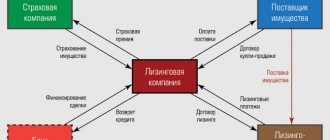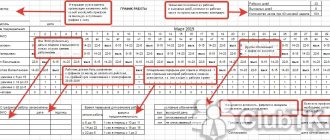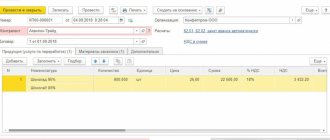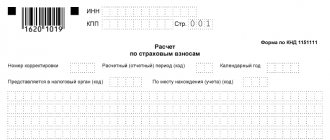What is cash on delivery
Cash on delivery is a method of payment for parcels. In this case, the order is paid not by prepayment, but upon receipt.
Types of cash on delivery
There are only two varieties.
- Full payment. With this option, the buyer pays the entire cost of the goods.
- Partial payment. In this case, part of the money for the purchase has already been paid by the buyer. Often, with this option, the cost of the goods is paid immediately, and only delivery is cash on delivery.
How it works
There is a certain mechanism according to which shipments are delivered by cash on delivery.
- The seller sends the parcel, immediately selecting the appropriate service and indicating the amount that the recipient will have to pay.
- The parcel is transferred to Russian Post and moves to the recipient, passing through various post offices.
- As soon as the parcel or parcel arrives at the post office, the recipient receives an SMS message if he left his number to the sender. If he didn’t leave his number, then you need to wait for a notification from the postman.
- After receiving the notification, the recipient goes with it to the post office. It is necessary to have with you a passport of a citizen of the Russian Federation and money for cash on delivery.
- At the post office you will need to fill out your passport details on a special receipt.
- We pay the cash on delivery amount to the operator.
- The payment is sent by postal order to the sender.
Important! Russian Post charges a commission for cash on delivery.
How to send money by cash on delivery?
Sometimes financial assistance is urgently needed for a person who is geographically located in another region. In this case, you can send funds by cash on delivery. To do this you should:
- Fill out a special form, which can be received free of charge at the branch or downloaded on the official postal portal.
- Present your passport and money to the specialist.
- Receive a check confirming the deposit of funds in order to transfer them to another person.
- A notification is delivered to the recipient, with which he receives funds at the post office. You only need to have your passport with you.
It is important to note that when receiving money, the recipient may be charged a transfer fee
.
How to find out that a package has arrived
There are several ways you can find out where your package is.
- Using the site. You can go to the Russian Post website. Select "Tracking". Enter the tracking number (track number) in the special field. Click on the blue magnifying glass icon. All information about the shipment will appear.
- Using social networks. Social networks can also be used. To do this, you need to go to the Russian Post group, and then start corresponding with the assistant. Hints will show you what to click or write. This method also requires a parcel tracking number.
- By phone. You can call the hotline, give the package tracking number, and then the operator will tell you the location of the shipment.
- Through notification. If there is no tracking number, you can simply wait for a notification from Russian Post employees.
You can use any convenient method.
Commission amount
It should be noted that cash on delivery in itself is a convenient way to pay for goods. Thanks to this system, the recipient has the opportunity to first check the parcel and its contents, and only then leave money for the purchase. The payment is transferred to the sender - and everyone is happy.
But you have to pay for everything, and for such amenities too. The fact is that post offices specialize, first of all, in sending parcels, and only secondarily in making all kinds of payments. Russian Post charges a commission for cash on delivery, and the same applies to all other postal operators within our country.
And it would be good if it were possible to immediately say how much the post office commission for cash on delivery is. Money is sent to the seller at special rates - regional or all-Russian, for a large amount or a small one. The size of the commission charged directly depends on this. Let’s take a closer look using the official website of the Russian Post.
All-Russian
There is a predetermined percentage of cash on delivery in Russian Post: it is set for each transfer by default, unless otherwise agreed in a given region. In total, there are 17 constituent entities of the Russian Federation in Russia, for which other conditions of service have been developed.
Standard federal conditions calculate the rate depending on the amount of payment:
| Amount of imposed transfer | Commission on the total transfer amount |
| Up to 1000 rubles | 80 rub. + 5% |
| 1000 – 5000 rubles | 90 rub. + 4% |
| 5000 – 20,000 rubles | 190 rub. +2% |
| 20,000 rubles – 0.5 million rubles | 290 rub. + 1.5% |
Let's look at it with an example. Let's say Dmitry Sergeev ordered an item worth 4,000 rubles by cash on delivery, and the seller set the same amount at the post office. Then the commission will be 0.04 * 4000 + 90 = 250 rubles.
Regional
Basically, the additional commission is established for those subjects of the Russian Federation that are logistically and/or geographically significantly less accessible than million-plus cities in the European part of the Russian Federation. It is almost impossible to understand the regional percentage for cash on delivery transfers in Russian Post without a table, because Rates by region sometimes vary greatly.
Attention: the data in the table is not a replacement for the all-Russian commission fee. It’s just that in 17 constituent entities of the Russian Federation there is a higher tax rate for services. Everything below is in addition to the table above, not a replacement for it.
| Subject of the Russian Federation where other tariffs are established | Cash on delivery amount | |||
| Up to 1000 inclusive | 1000 – 5000 inclusive. Interest is charged on amounts exceeding the limit of RUB 1,000. | 5000 – 20,000 inclusive. Interest is charged on amounts exceeding the limit of RUB 5,000. | 20,000 – 0.5 million rubles inclusive. Interest is charged on amounts exceeding the limit of RUB 20,000. | |
| Kirov region | 0.01 | 10 + 1% | 50 | 50 |
| Republic of Sakha (Yakutia) (for areas equated to the regions of the Far North) | 0.01 | 10 | 10 | 10 |
| Irkutsk region (for areas equated to the regions of the Far North) | 3 + 2% | 23 + 1% | 63 | 63 + 0,5% |
| Chukotka Autonomous Okrug | 0.02 | 20 + 2% | 100 + 2% | 400 |
| Tomsk region (for Kargasoksky, Parabelsky (including the city of Kedrovy), Aleksandrovsky districts, the city of Strezhevoy) | 0.01 | 10 | 10 | 10 |
| Tyumen region | 0.02 | 20 + 2% | 100 + 2% | 400 + 2% |
| Krasnoyarsk Territory (for areas equated to the regions of the Far North) | 0.03 | 30 + 2% | 110 | 110 |
| Primorsky Krai | 2 + 2% | 22 + 1% | 62 | 62 |
| Kamchatka region | 0.01 | 10 | 10 | 10 + 0,5% |
| Yamalo-Nenets Autonomous Okrug | 0.02 | 20 + 3% | 140 + 2% | 440 |
| Amur region | 0.03 | 30 + 3% | 150 | 150 |
| Khabarovsk region | 0.03 | 30 + 1% | 70 | 70 |
| Omsk region | 0.02 | 20 + 2% | 100 | 100 |
| Krasnoyarsk Territory (for the regions of the Far North) | 0.04 | 40 + 2% | 120 | 120 |
| Khanty-Mansi Autonomous Okrug | 0.04 | 40 + 5% | 240 + 4% | 840 + 1% |
| Sakhalin region | 3 + 3% | 33 | 33 | 33 |
| Nenets Autonomous Okrug (for the territory of the Autonomous Okrug, except for the city of Naryan-Mar) | 0.03 | 30 + 2% | 110 + 1% | 260 + 1% |
| Republic of Karelia | 0.02 | 20 + 2% | 100 + 1% | 250 |
How to find out the amount of cash on delivery
Firstly, cash on delivery is the cost of the goods that were purchased by the recipient. Therefore, the approximate amount can be known immediately. In addition, sometimes shipping is added to the cost of the product.
The seller can tell you the exact amount to be paid. If this does not happen, you can use the Russian Post website.
How to do it:
- Go to the Russian Post website. Select the “Tracking” function.
- In the field where the tracking number is written, you need to enter the track number.
- Next, you need to click on the icon to the right of the tracking number field.
- Next, information will be released about which sorting centers the shipment passed through.
All the necessary information can be on the right side or below. There you can see information about who sent the parcel or letter, as well as to whom it is intended, as well as the amount of cash on delivery. Sometimes the weight of the parcel is also indicated.
In addition, a commission should be added to the amount of cash on delivery.
How can a buyer protect himself?
If the goods arrived cash on delivery, this does not mean that the buyer found an honest seller. Inside the parcel there may be bricks, sawdust and other props. With minimal suspicions (the weight of the parcel differs from that indicated, there are dents and scratches on the box), the buyer has the legal right to open the parcel and see its contents.
For this, postal employees draw up a report in Form 51-B. If instead of the ordered product there is something else inside the parcel, the recipient has the right to refuse payment. Then you can write a complaint to the store.
Before ordering goods by cash on delivery, you must carefully study the online store’s website and reviews. Good companies that value their reputation will not send low-quality goods. And in case of any problems (for example, a product with a manufacturing defect), they will replace the product. In some cases, a public offer is important, which stipulates the actions of the buyer and seller in cases of refusal to receive, etc.
In general, one of the most effective ways to protect yourself from fraudulent parcels is to ask the seller and Russian Post to make an inventory of the attachment before sending it. This will allow you to open the parcel before purchasing and check its contents. We discussed this method in detail in this article.
What is the commission for when paying cash on delivery?
This money is taken for the fact that the amount for payment for the parcel will be transferred by postal order to the sender. This commission is usually about 5% of the amount. Usually it is at least 45 rubles. It all depends on the order amount.
It is worth noting that when delivering regular parcels with a declared value, no commission is charged.
By the way, the amount of declared value cannot exceed the amount of cash on delivery and vice versa. Russian Post does not have the right to accept such parcels for forwarding.
Advantages and disadvantages
Many customers use cash on delivery when ordering goods through online stores. Only with this type of service can you pay for the goods received at the time of receipt, having first checked the availability, according to the attached list, and determined its actual cost.
For the seller
Before sending the goods to the buyer, the store administrator contacts him. The manager can send the order only after agreeing on all the details with the client. When sent correctly, the warehouse fills out Form 112 indicating the sender’s details and bank details for transferring funds to them.
You can also receive money for goods sold in cash at the post office upon presentation of your ID. This method is simpler for individuals, but inconvenient for businesses that operate on a cashless basis.
The time that the cargo is in transit depends on the distances between the sending and receiving points. When delivering the parcel, the client fills out a postal notification form. The operator has no right to demand payment for the parcel until its contents have been verified.
The product can be ordered with delivery to the specified address. It is worth considering that the service will be provided at an additional cost. Addressed delivery is not taken into account in the product tariff, and the cargo will cost more.
On the one hand, cash on delivery helps stores build a customer base; on the other hand, the sender has no guarantee that the item will be picked up by the customer. In this situation, payment for delivery to the post office and return to the sender is at the expense of the seller.
Note! 10% of all shipments from online stores are not redeemed by customers; often they do not come for them at all. To avoid incurring losses, sellers include financial losses in the cost of goods.
For sellers, in addition to the risk of loss for non-received cargo, the cost of the product and the costs of its shipment drop out of the turnover for some time. And after payment from clients, funds are received within 3 days. All this affects business development.
Address delivery
For the buyer
It is beneficial for the client to pay for the ordered goods upon receipt. It is possible to protect yourself from scammers and buying a “pig in a poke”. Before paying, you can first check the order’s compliance with the declared one, its quality, and only then pay or refuse receipt.
This is especially true for new online stores that do not yet have good recommendations and customer trust. Situations that buyers face when receiving goods with prepayment:
- the product may be sent of poor quality, or it will not correspond to what was ordered;
- After payment, the seller stops answering phone calls, deletes the website, and the goods do not arrive.
You can return the sent prepayment money if you contact the company that sold the goods and send them an appeal requesting the return of the transferred funds. A letter with the reason for the return is reviewed by a store employee. To understand why the product was returned, a quality examination is ordered, a conclusion is made, and only after that the money is returned to the client.
Additional Information . Receiving a negative response from the seller does not mean that you need to accept it. The client has the right to order his own independent examination.
If the low quality of the product is confirmed, the seller is obliged to return not only the prepaid amount received, but also to reimburse the funds spent on the expert study.
The advantage of cash on delivery is that the buyer can protect himself from such situations, but the cost of the goods will be determined not only by the delivery amount, but also by an additional commission.
You can calculate the commission if you know the post office percentages. They are different for everyone. At Russian Post, they amount to 5 percent of the total assessment in excess of the mandatory 80 rubles.
The disadvantage of cash on delivery is that the goods may arrive at a higher price than previously agreed upon. And the advantage of this calculation is that the delivery of the goods can be tied to a specific date that is convenient for the buyer.
You can pay for your order either in cash or by bank card
What are the advantages of this payment option?
There are a number of important advantages of this method of delivery and payment.
- Increased likelihood of payment. You can save money to pay for the parcel. While the order is being delivered, you can prepare the required amount.
- Reliability. This way you can be sure that the package with the goods will arrive, since payment is made when it is almost in hand.
- Easy payment. For this method of payment you do not need to have bank cards or electronic wallets. Payment is made in cash.
The disadvantages of using cash on delivery include the commission that Russian Post charges for the service.
Features of cash on delivery for the sender and recipient
Both sides of cash on delivery have their own risks and benefits. Let's take a closer look at them.
- The seller's main risk is that the buyer may not receive the parcel. This means that all shipping costs are borne by the seller.
- The buyer may receive an empty parcel or a parcel with another product (or a product of poor quality). To protect yourself from this, you need to use only trusted online stores with good reviews.
- Shipping costs and cash on delivery fees are the responsibility of the buyer. Of course, unless otherwise agreed between the seller and the buyer.
Pros and cons of using cash on delivery for business and more
Knowing about this method of sending, many can try themselves as an entrepreneur. If you do something very well, but the audience in your city is not the target or the customer base of your particular store is too small, reach out to other regions with the help of advertising - cash on delivery parcels are convenient for both parties. The seller receives payment or his goods back - he is insured against the risk of theft, and the buyer also knows that he will not be deceived, because in fact he simply purchases his purchase at a post office branch without sending 100% of the cost of the goods in advance.
Benefits for a new entrepreneur:
- You do not have personal contact with the buyer
- The order is placed through your website and by phone
- You can receive payment either in cash or to a bank account.
- you can send the parcel at the expense of the recipient;
- fast money transfer for the seller.
The benefits for the buyer are as follows:
- no need to go to the bank and pay for the product;
- no prepayment required;
- expedited delivery method.
Flaws:
- high delivery price (hence, the cost of the ordered product);
- there is no guarantee for the product (it is not known what is inside the parcel or parcel);
- the buyer may not pick up the goods, which is why the seller will have to pay the costs;
- the possibility of loss or damage to the product due to the quality of service provided by Russian Post.
What to do if a parcel arrives with cash on delivery
Of course, if a person is waiting for a package, he knows what’s in it. But there are times when the recipient has no idea what’s in the package. In this case, there is no need to receive it, this is how scammers operate.
Who never sends parcels by cash on delivery?
These cannot be any individuals or legal entities, private or public. You never have to pay for emails you send:
- courts;
- Rospotrebnadzor;
- bank;
- traffic police;
- Pension Fund;
- insurance companies;
- organizations providing resources.
How can a buyer refuse to receive a parcel?
A store always takes a risk when it sells products by cash on delivery. As practice shows, the percentage of unredeemed goods ordered in this way often reaches 10%, or even 15%. The ideal and practically the only option for protection from unscrupulous buyers is for the seller to collect a partial advance payment before directly shipping the goods. But if a store operates on a postpaid basis, then it should be prepared for anything.
If you are the recipient of the parcel, you can refuse it in the following ways:
- Check the box in the notice indicating that you do not want to pick up the goods.
- Ignore notifications received.
How to find out who sent the package
There are times when the recipient is expecting several parcels. To understand exactly who the shipment came from, you need to look at the notification. If it is not there, you can use the tracking number and go through the standard procedure.
- Log in to the Russian Post website. Select me "Track".
- In the field where it says “tracking number” you need to enter the tracking number. You can get it from the seller. It is written on the receipt when the parcel is sent.
- Now you need to click on the icon to the right of the tracking number field.
- Next, information will be released about which sorting centers the shipment went through, as well as who sent the parcel and how much it weighs.
Is cash on delivery used abroad?
Many countries have been using this service since the 19th century. Mostly residents of European countries sent documentation and some goods this way.
The service was called forwarding correspondence on demand. In addition, there was another service very similar to cash on delivery - postal guarantee. This is a special service that provided the opportunity to pay bills through Russian Post. In addition, it was possible to make a contribution and also collect debts. This was very popular.
In addition, in the 19th century, 50 million letters and parcels were sorted in a year.











